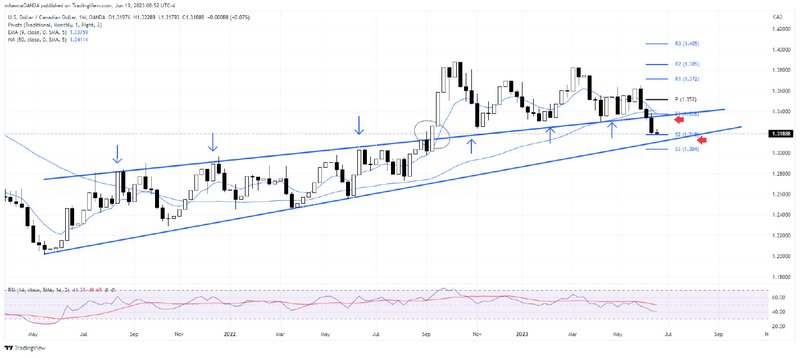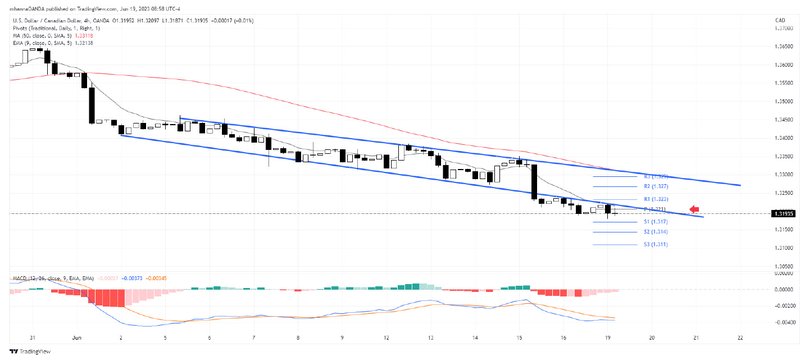What is multi-timeframe analysis?
Multi-timeframe analysis is an approach used by traders in different markets. The idea is that regardless of which timeframe the trades are based on, a trader should always consider the entire picture when entering a trade or planning a trading strategy.
This approach helps traders in different ways, which include but are not limited to, fine tune their trading strategies, entry and exit price levels, risk management, and can improve the odds of better market timing. In other words, it helps with trade enhancements and optimization.
Deciding how many timeframes to analyze
Deciding how many timeframes to use is up to the trader’s needs as well as the instrument being traded; there is no set number, and a reasonable approach is recommended; too many can be overwhelming whereas too little may not provide the full picture.
In many cases you will see that different time frames provide identical messages. As traders continue to build experience with specific strategies or instruments, they will eventually find their ideal approach.
For example, a currency pair with higher volatility may require analysis of 4 -5 timeframes; on the other hand, a less volatile pair may only need 2 - 3 timeframes. Other factors that may affect choosing a timeframe can be trade durations; a long-term trader may need only two time frames; a longer time frame to identify a trend and a shorter one to enhance the entry price, while a day trader or scalper may consider time frames in minutes.
In some cases, a chart pattern may force traders to use specific time frames for a zoomed-in or zoomed-out view, for example a 4 hour chart (zoomed-out view) can show a larger formation or pattern, such as a price channel, while a 1-hour chart (Zoomed in view) can help identify candlestick patterns on the shorter time frame.
In our example below, we used a 4-hour and a 1-hour chart. There is not much difference there; however, the 4-hour chart allows us to see a declining pattern, while the 1-hour chart allows us to see a zoomed-in view inside the same channel and can help fine tune entry price by choosing the levels that offer the best risk/reward ratio available.
Another way to look at it - if I am a swing or a position trader and plan to hold on to my positions for a few days, it is possible to consider the 4-hour chart and if I am day trading, maybe consider the 1-hour chart or lower time frames.
It is also important to remember that the lower the time frame is, the louder market noise will be and the charts will most likely have more failed patterns or whipsaws compared to longer timeframes.
On the charts below, we will go over an example of multi-timeframe analysis covering USD/CAD. The process begins by taking a top-down approach by analyzing the higher timeframes, moving to the lower ones, and adding notes as we go on. Once the analysis is complete, the trader becomes more informed and can conclude which trades suit them best.
USD/CAD - Monthly chart
-Price is currently trading in the middle of its long-term trading range which began in 2015.
-Price is still in a long-term uptrend, however it is currently finding support at the trendline and a break below is possible.
-Price broke below its annual PP at 1.3310 area, also broke below its EMA9.
-Price is currently finding support with its MA50 which also intersects with the trendline.
-The COT report reflects large speculators positions moving towards the sell zone reversing from a 5 year long extreme position level.
-Stochastic Indicator %K broke below %D, however we don't have a monthly close yet.
USD/CAD - Weekly chart
-Weekly chart offers a breakdown of the aforementioned upside trendline, price can be seen trading within a narrowing upside channel which was broken in September 2022 and price has returned to trade within the channel again.
-The upper channel border became an important resistance level while the lower channel border is now a support. (Blue arrows)
-Price is trading below its EMA9 and its SMA50.
-RSI close to oversold levels, possibly reversing.
USD/CAD Daily Chart
-Price broker below the extended trendline.
-Price broke below a confluence of MAs (SMA50, SMA200 and EMA9)
-Price is currently finding support at support level 1.3180.
-RSI at oversold levels, however it is yet to break above its smoothed average.
USD/CAD 4 Hour Chart
-Price broke below a declining channel formation, the lower border which was a support level is currently acting as a resistance.
-The lower border line intersects with PP at 1.3210 as well as EMA 9
-MA50 intersects with upper channel borders at 1.3290.
-MACD line is below the signal line, a MACD cross above signal line may be used as a trigger.
USD/CAD 1 Hour Chart
-The chart offers a zoomed in view for the declining channel/broadening formation.
-Price is trading below its SMA50, SMA200 and EMA9.
-Price is also trading below its Daily pivot price level of 1.3210.
Conclusion
Traders can use their analysis and optimize their strategies; for example a long term investor or a swing/position trader considering to buy may wait for the situation to clear on shorter time frames, while a short-term trader looking for trading ranges may consider candlestick patterns or trading ranges on the 1 hour or 4 hour chart, bearing in mind the big picture on the long term charts. The indicators used on charts or the identified patterns are just examples; charts can be read differently by traders, and methods of using indicators can vary significantly.
It is always good to remember that any technical tool or any market analysis approach, including multi-timeframe analysis is never enough to form a complete strategy. Traders can incorporate multi-timeframe analysis as an additional tool among other fundamental and technical approaches.
Disclaimer
This article is for general information purposes only, not to be considered a recommendation or financial advice. Past performance is not indicative of future results.






